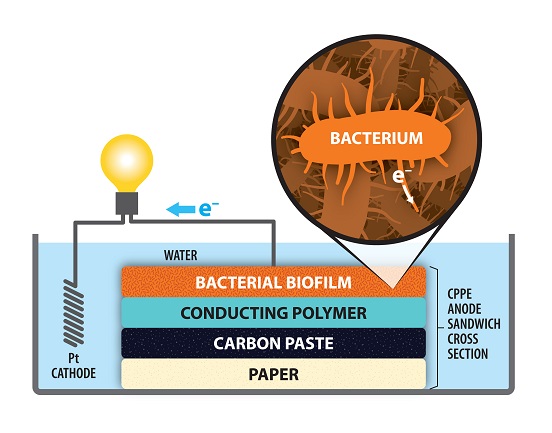
Image: University illustration / Michael Osadciw
Many researchers agree that microbial fuel cells have a range of promising applications. However, before they can reach widespread applications, researchers need to make them both cheaper and more efficient.
A team of researchers from the University of Rochester believe they’re making progress on that front with the development of a paper electrode.
Microbial fuel cells drive electric current by using bacteria and mirroring bacterial interactions found in nature. In the 21st century, microbial fuel cells found new application in their ability to treat wastewater and harvest energy through anaerobic digestion.
This from University of Rochester:
Until now, most electrodes used in wastewater have consisted of metal (which rapidly corrodes) or carbon felt. While the latter is the less expensive alternative, carbon felt is porous and prone to clogging. Their solution was to replace the carbon felt with paper coated with carbon paste, which is a simple mixture of graphite and mineral oil. The carbon paste-paper electrode is not only cost-effective and easy to prepare; it also outperforms carbon felt.
“The paper electrode has more than twice the current density than the felt model,” says Kara Bren, co-author of the paper.


